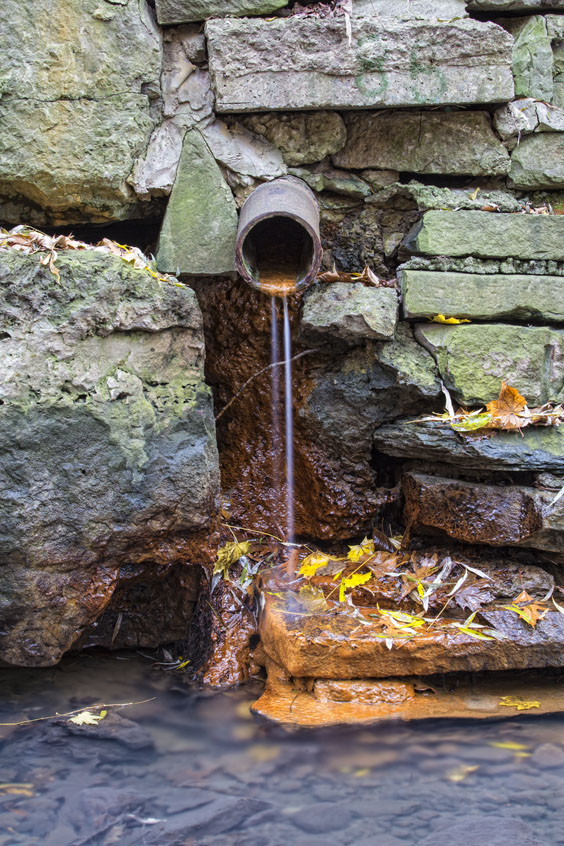Have you heard of the slow reading movement? Among those who cultivate literary appreciation, there’s a growing push-back against the instant-on digital environment that treats readers as consumers and books as commodities to be gobbled up as quickly as possible so that consumers can move on to the next product. Slow reading is about savouring the moment and making yourself present enough to the words on the page that you can sense their nuance. Advocates of the movement say that it heightens the reading experience. I wonder if the same thing is also possible — maybe necessary — in photography. Digital cameras make it easy to take hundreds of exposures at a time while incurring little or no expense (except the expenditure of time needed to sort through them). Gone are the days of hiking to a location with a couple photographic plates in your pack and only those two chances to get your shot. Now there are no limitations on your resources. The problem, though, is that such convenience may make us complacent when it comes time to do the real work of our craft – the work of looking closely at a scene and applying our visual imaginations to the creation of an image. Maybe we need to slow down. Maybe we need to discipline ourselves by pretending we have only one or two chances to get the shot.
With this in mind, I tried an experiment. A while back, I had seen a drain pipe that empties into Yellow Creek. Rust from the pipe has discoloured the rock where the water splashes, turning it a bright orange. I took a shot of it before, but wasn’t happy with the result. So I thought to myself: I should go back, but this time, I should approach it slowly, methodically, breathe deeply. So, here, I document how I proceeded:
First off, I found a stable place to set up my tripod. I was going to use my 70-200 mm f 2.8 lens, which is fairly heavy, so there can’t be any shake. Next, I remembered to put on my mirror lock and pull out my remote shutter release. These two steps go hand-in-hand with setting up the tripod. They’re aimed at keeping shake to minimum. Then I lined things up and took a test shot. Here’s the result:
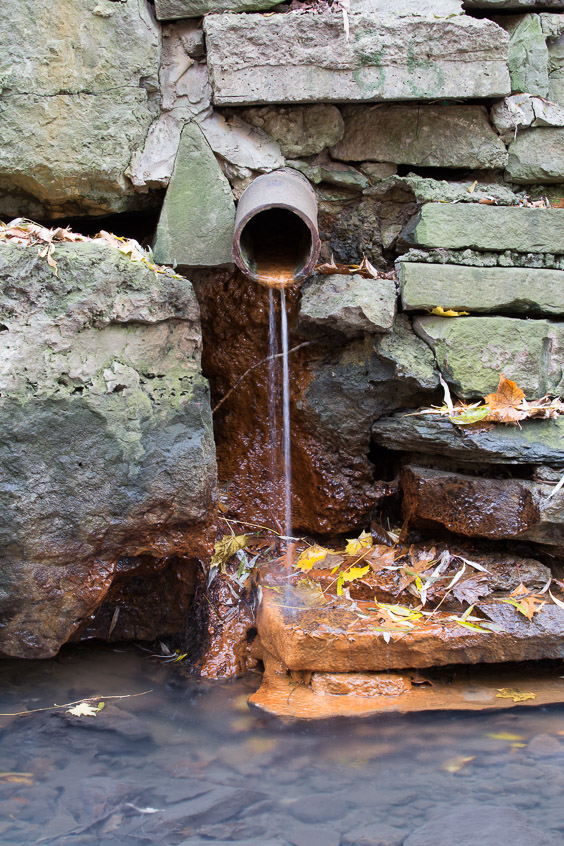
The reason for the test shot was to get the focus right. You see, if I really take slow shooting seriously, then I have to slow things way down. That means using an ND64 filter, which slows things down by 6 f-stops. Sometimes, autofocus doesn’t work with a neutral density filter because it doesn’t let in enough light for the camera to detect the correct distance. So, after the test shot, I switched to manual focus and screwed on the filter. At f-16, I set the shutter to 30 seconds. This was the result:
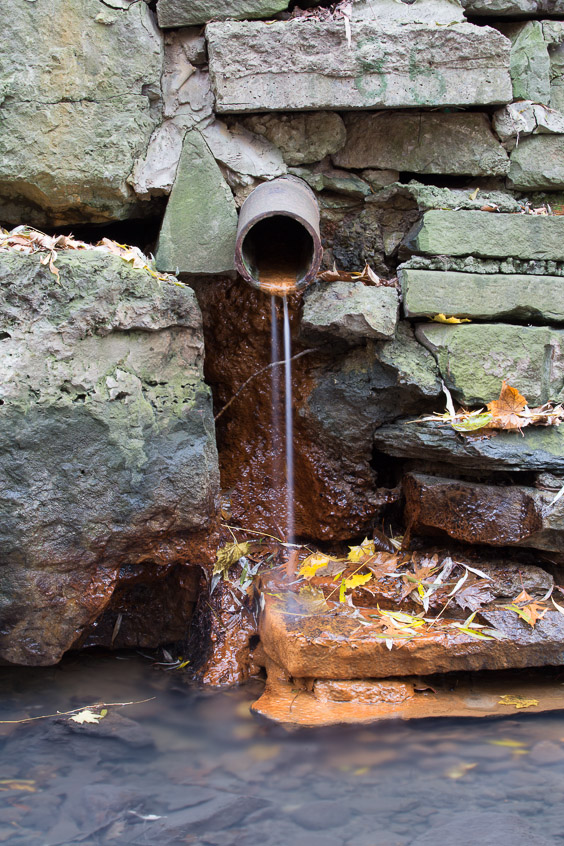
The colour is a little more saturated, but you can’t see that in a small jpg like this. Really, the only difference you can see is in the water pouring from the pipe. It has that silkiness that comes from a long exposure.
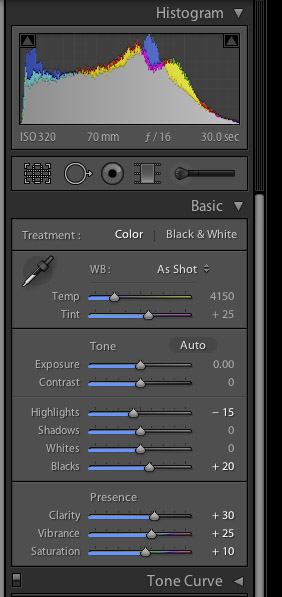
I’m not done yet. Taking the shot is only half the story. The next step was to import the RAW file into Adobe Lightroom where I applied a lens correction, upped the clarity, vibrance and saturation, and adjusted highlights and blacks. You can see the settings I applied at right.
From there, I exported the image as an uncompressed .tif file which I opened in Photoshop. There, I did two more touch-ups using Nikon’s Color Efex Pro Plug-In. The first touch-up was to enhance the tonal contrast as shown below. This gave the image some punch and brought out some of the detail lurking in the shadows. I set that adjustment layer to 50% opacity because I’m too lazy to do it within the plug-in.
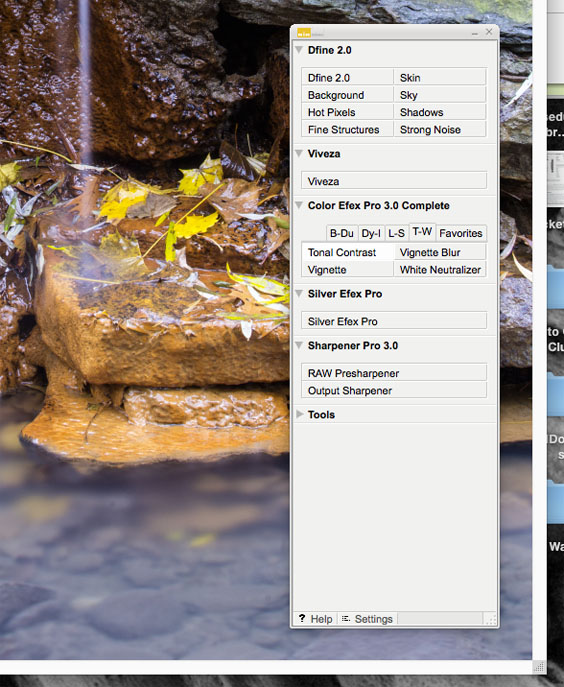
The second touch-up was to add a subtle vignette to the image. You might not even notice, since it’s only a 1% border with a 3% opacity.
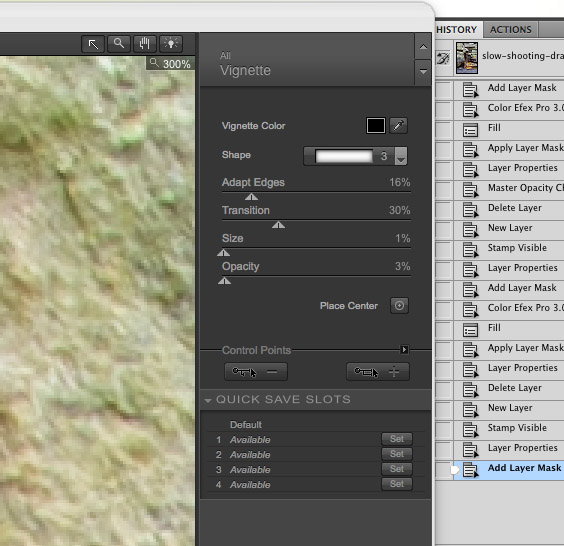
Are we slow yet? Here’s the final image. Take your time. Savour it.
